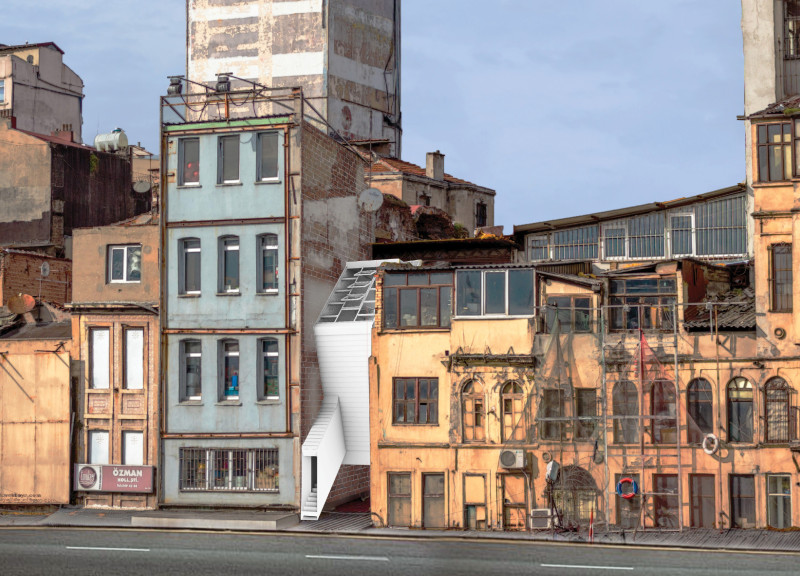5 key facts about this project
The "Sunseeker" microhome utilizes a variety of materials, each chosen for its ecological benefits and functional properties. Key materials include sawdust infill for insulation, kerfed wood panels for structural flexibility, photovoltaic cells for energy generation, and integrated rainwater tanks for resource management. Together, these materials contribute to a design that not only serves as housing but also as a model for sustainable living in urban environments.
Unique Design Approaches and Features
A defining characteristic of the "Sunseeker" project is its adaptive architectural form. The structure's shape varies based on its surrounding context, ensuring optimal sunlight exposure while creating a visually cohesive integration within the existing urban fabric. This adaptability extends to the interior spaces, which are arranged to maximize light, comfort, and versatility.
Key architectural features include a light well that allows natural light to penetrate deep into the living areas, and a flexible facade system that can change in response to environmental conditions. These features not only enhance user experience but also address climate resilience and energy efficiency. The design also promotes social interaction, with communal living areas that encourage a sense of community among residents.
Architectural Details and Functionality
Internally, the microhome is organized into designated areas that support multifunctionality. Spaces within the home include a loft for flexible use, a kitchen and lounge designed for social interaction, and a bedroom that maintains privacy while ensuring a connection to the overall living environment.
The emphasis on sustainability is evident in both the functionality and the design choices made throughout the project. By incorporating systems for energy generation and rainwater collection, "Sunseeker" reduces dependency on conventional resources, exemplifying a model approach to urban architecture.
For further insights into the architectural plans, sections, and overall design concepts of the "Sunseeker" project, the reader is encouraged to explore the detailed presentation. This exploration will reveal the intricate architectural ideas that define this innovative project.


























